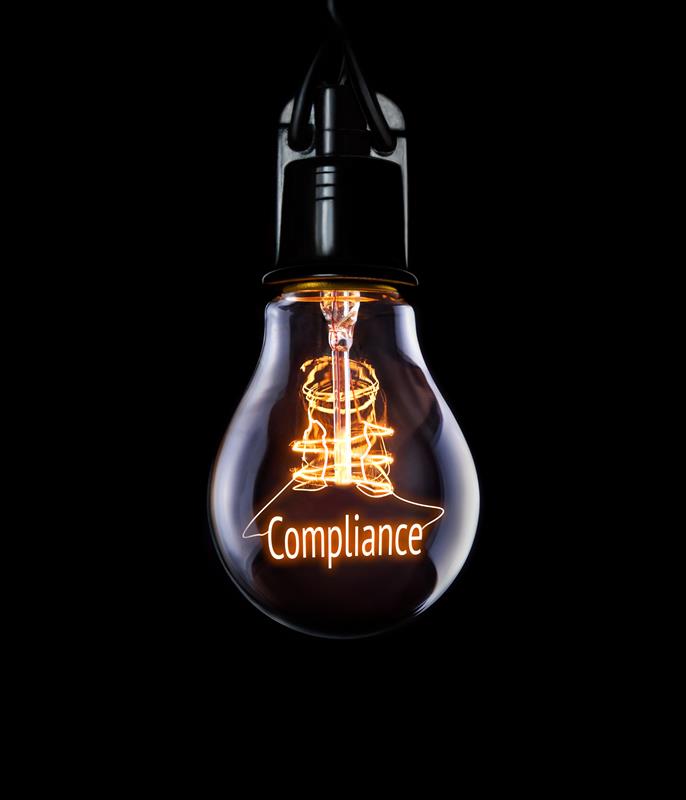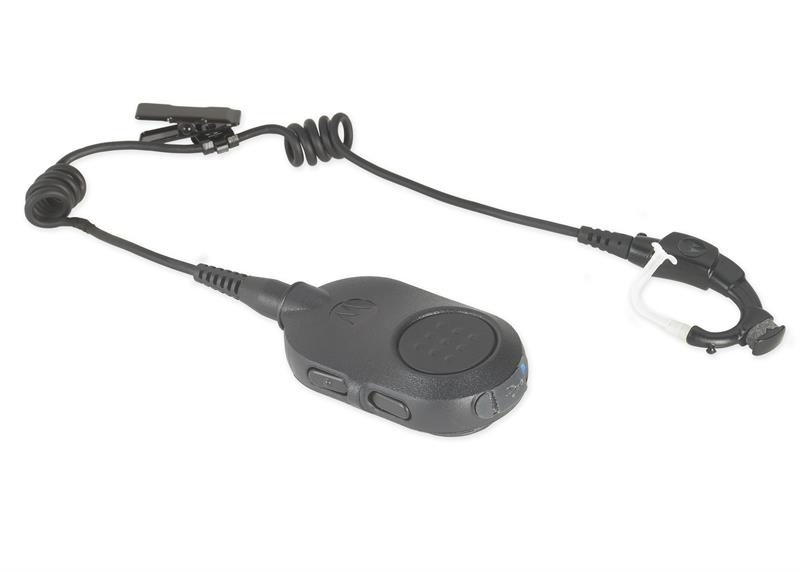Users of two-way radios face a dizzying array of options when it comes to accessories. From bog-standard functional kit such as batteries and chargers, through to more cutting-edge headsets and earpieces, there are literally thousands of different accessories on the market provided by device manufacturers and third-party vendors.
Navigating these can be bewildering for the uninitiated. So what do potential purchasers of two-way radio accessories need to watch out for, and what is the direction of travel in terms of future innovation?
Although many customers buy their accessories when they buy their radio device, there is a large after-market for accessories to meet the very specific individual needs of users, according to Sean Fitzgerald, solutions marketing manager at Motorola Solutions UK.
“They typically don’t come to us saying ‘I want some accessories’,” says Fitzgerald. “They come to us saying ‘I have some particular need that needs to be fulfilled’, and these needs normally fall into two categories. The first one is there is some particular functionality that’s required, and the other major pot is the particular environment that people are working in, and they need some equipment to overcome whatever that environment is.”
He cites the example of a customer who might buy a radio system without accompanying accessories and then, when they start using the radios in the field, realise the environment is too noisy so they subsequently invest in earpieces.
He says there is also a reasonable-sized market that has been created by customers who might “buy a very basic version of an accessory at the point they buy the radio and then, when it’s in place, they discover it isn’t up to the job in some areas so they upgrade some of the users to different or better accessories”.
The good news is there is an accessory out there that meets the needs of all individual users. Purchasers just have to ensure that what they are buying is fit for purpose, says Ian Lockyer, marketing manager at Icom UK.
“So if they are being used for construction, they should be waterproof, dust-proof and durable and certainly built to MIL-SPEC,” explains Lockyer. “Comfort should also be considered. Most radio users will be using a radio and, say, a headset for the duration of a shift, so anything heavy or cumbersome would become uncomfortable and may introduce fatigue.”
Paul Jenkins, senior business development manager at Radiocoms, adds that when making recommendations to customers, his company takes into consideration a number of factors to ensure the purchaser is buying an accessory that is fit for purpose, is compliant with regulations and helps them adhere to their duty of care as an employer.
“This could be, for example, a high-noise-level environment where they need to ensure they are complying with hearing protection protocols for their employees, whereas a more secure, covert operation would be looking for a discreet earpiece while ensuring they are hygienic, with ways of securing the device should the user be working above ground level such as [in] a carry case or chest pack. It is all about utilising the features of the accessories to benefit the users from both an efficiency and safety point of view,” says Jenkins.
The good news is that these days there is a raft of options out there to suit different functionality requirements and environments. Take the example of wearable tech such as body cams. It is a particular area of focus for RugGear at the moment, according to Oliver Schulte, CEO at the company.
“Essentially we see a need to cater for the specific use-case scenarios in the PoC [PTT over Cellular] field,” says Schulte. “We are providing a range of different accessories which are adjusted towards the PTT landscape.”
As well as creating new charging and headset technology to service this burgeoning part of the market,
RugGear has also developed a belt clip “in which the end-user can have the device either front- or back-facing depending on the end-user scenario”, says Schulte.
Jenkins adds that radio accessories are becoming increasingly compatible with various styles of PPE. “We have integrated PPE/two-way radio accessory requirements for our clients, such as headsets into helmets, remote speaker mics connected to breathing apparatus, or device clipping options to high-visibility wear,” he explains.
In addition to developing new accessories that meet emerging user trends, Fitzgerald says Motorola Solutions continually updates and refreshes mainstays of its accessories portfolio. Batteries have obviously been around for a long time, but improvements in technology mean the company is able to deliver smaller or more effective products – for instance, batteries that can work at a lower temperature.
While these sorts of technology improvements may not grab the headlines, they are still important for many users. What is more likely to catch the attention of existing and new accessories users alike is the cutting-edge technology that manufacturers like Motorola Solutions are bringing to the market. One area where many companies have focused their innovation efforts over the past few years is wireless technology, says Jonathan Hamill, an independent consultant with in-depth experience in telecoms and IT, who has previously been responsible at VP level for a global line of business with a two-way radio manufacturer.
“The single point of failure normally for a lot of accessories tends to be the cable connection,” explains Hamill. “From a PMR perspective, users tend to need a ruggedised device first of all, and then the single point of failure can be if the cable that connects that ruggedised device to the rugged accessory can’t stand the rigours of time and abuse – then that becomes a problem area. Hence vendors of devices are bringing in wireless technology like Bluetooth and some other proprietary forms as well to remove that single point of failure.”
Fitzgerald confirms that Motorola Solutions has detected an “uptake” in Bluetooth accessories over the past few years. “That’s partly driven by the fact that some radios now support Bluetooth, which they didn’t in the past,” he says.
It’s also partly driven by continued enhancements in Bluetooth technology and greater awareness of its usefulness in the workplace for things like maintenance work. Fitzgerald says maintenance workers often have to lug big toolkits around a factory to get to a machine that needs repairing and they may have to call into a central hub or support centre on their two-way radio while they are working on the machine.
“If they’ve got to have the radio on their belt with a wired earpiece, it can be cumbersome and get in the way, but if they can leave the radio beside the machine or in their toolkit and they have Bluetooth connection, it’s a much more flexible solution for them,” he explains.
Fitzgerald anticipates Bluetooth accessories will continue to be a significant area of focus for new product development by manufacturers in the years ahead. It’s a view shared by Jenkins, who says innovation won’t just be restricted to accessories such as Bluetooth earpieces.
“Software applications such as iBeacons are giving users a wider scope to integrate and unify their operations such as indoor tracking and linking with applications such as dispatcher solutions, eliminating the need for multiple devices,” says Jenkins.
In terms of the future direction of travel for accessories innovation, Fitzgerald thinks much of it will also be fuelled by the wider adoption of what he describes as “collaborative technology”.
“By that I mean detectors and sensors being connected together almost as a small network on the user,” he explains. “Imagine somebody working in a hazardous environment where there are maybe gasses or radiation that they can only withstand a certain amount of. They tend to wear a detection device of some sort which tends to be standalone. In the future you will see much more collaboration between all of those various devices together, and the radio is an ideal hub to transmit that information back to a central point.”
Regardless of how wireless accessory innovation pans out in the future, Hamill says it is crucial that users ensure these accessories are up to the task in hand by undertaking rigorous scenario testing.
“Sometimes it’s not always possible to have wireless accessories, and where you do have the traditionally connected cable connection it is really important to make sure they’ve got adequate life testing or scenario testing,” he adds.
“Scenario-based testing is really important, and if you’re buying a product from a manufacturer who says ‘yes, we test to our standards, but we are not going to test [the equipment] to your standards’ then you have to understand if their testing is going to replicate in any way what your real-life experience of using the accessory is going to be.”
It is an important point because many two-way radio systems wouldn’t be effective without additional accessories, so finding something that is fit for purpose is vital.
“From security staff who require discreet headsets and earpieces, warehouse staff that may require a speaker microphone, to retail workers who may just need an effective stubby antenna which won’t dig into them during a shift – accessories play an essential part in delivering radio solutions to customers,” says Lockyer.
 Third-party issues
Third-party issues
Regulatory compliance isn’t something an accessories end-user will typically think about, but it is important that they don’t overlook this. Radio manufacturers design and test radios and accessories to ensure they offer functional performance, but also to ensure they meet regulations. That is not necessarily the case when it comes to using accessories from a third-party supplier.
“Although you might buy a third-party accessory that is stated to meet the various regulations, when you connect it to a radio it may not actually meet the requirement any more, particularly with regards to radiated emissions,” says Motorola Solutions’ Sean Fitzgerald. “When you’re buying a complete system of radio and accessories from the original manufacturer, you can have much better confidence it has been tested together.”
Independent consultant Jonathan Hamill agrees. He says if you are considering buying an accessory such as a carry case for a radio device from a third-party supplier, this is unlikely to be problematic, but audio accessories are a different thing altogether thanks to noise at work regulations.
“If you buy an accessory from a third-party vendor who doesn’t have an accreditation programme with the device vendor, how can you be sure you’ve achieved some compliance and are in control of the noise or the volume of conversation or signal between the device and human ear?” says Hamill. “Also, if you’re going to buy accessories from the same vendor as the device then you’re probably reasonably guaranteed it’s going to continue to work over the coming years, but if you’re buying from a third party, one of the things you have to understand is what agreements they have in place with the device manufacturer that you want to use the device with. If there are no agreements in place, the next time they change the device software, or whatever, you may find you have invested in a high-end accessory that is useless.”
What to consider: the main dos and don'ts of buying accessories
- Do make sure the device and accessory meet regulatory compliance around things like acoustic shock and hearing loss protection in the workplace. This can be a problem when using third-party accessories.
- Do make sure you accurately define your operational requirements when purchasing accessories for two-way radios. Otherwise you may end up shelling out on new accessories or be forced to upgrade to higher-spec kit.
- Don’t buy third-party accessories just because they may be cheaper than those provided by device manufacturers. You risk damaging your radios and invalidating the warranty.
- Don’t neglect to carry out scenario testing where possible to ensure the two-way radio and accessory that you intend to use in the field are fit for purpose.



